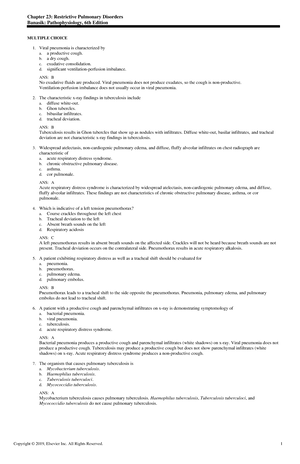- Information
- AI Chat
Was this document helpful?
Chapter 4 Altered Cellular
Course: Pathophysiology (NURS 240R)
53 Documents
Students shared 53 documents in this course
University: Southern Illinois University Edwardsville
Was this document helpful?

Chapter 4 Altered Cellular
Cellular Adaptation
Adaptive changes
oAtrophy: decrease in cell size, cell shrinks
oHypertrophy: increase in the cell size, cell grows larger (weightlifting to increase
skeletal muscle)
oHyperplasia: increase in the number of cells (liver regeneration
oMetaplasia: reversible replacement of one mature cell type, build on top of each
other. (one cell type is replaced with another)
oDysplasia: abnormal changes in size and shape, atypical
Cellular Injury Mechanisms
Hypoxic Injury (most common)
oIschemia: low blood supply
oLow oxygen content in ambient air
oLoss of hemoglobin, low production of RBCs
oResp. And cardiovascular disorders
Anoxia (total lack of oxygen caused by blockage)
Ischemia- reperfusion injury
oInjury to cell after blood and oxygen has been restored that occurs due to toxins
such as calcium being released in cell
Oxidative stress
Injury induced by free radicals and ROS that cause damaging
effects
Increased intracellular calcium concentration
Inflammation
Complement activation
Chemical or toxic injury
oXenobiotics- toxic, mutagenic, carcinogens
Chemical agents/ medications











